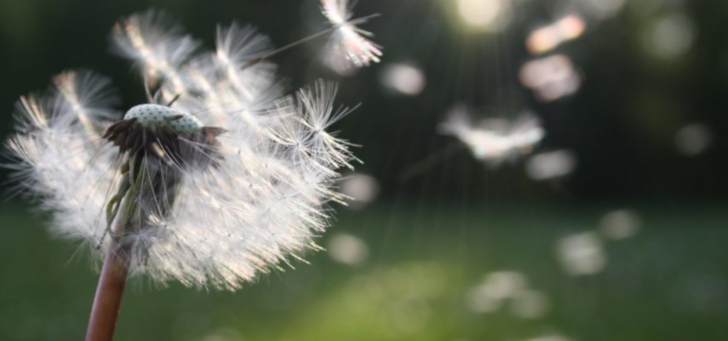Pollens and gardens: 5 tips for designing less allergenic green spaces
Solutions exist to limit the concentration of allergens in green spaces to bring relief to involuntary snifflers.

Rhinitis, conjunctivitis, asthma… The allergy season, usually from February to September, resounds with sneezes. Solutions exist to limit the concentration of allergens in green spaces to bring relief to involuntary snifflers.

Why design less allergenic parks and gardens?
Today, 20 to 25% of the French population suffer from respiratory allergies due to pollens. These are called pollinic allergies(1). In other words, 20% of the French population do not enjoy strolling in parks.
If trees and plants do us many favours and improve our daily lives, in particular to fight heat waves and cleanse the air, it is true that they bother some people. Air pollution, particularly by fine particles, also increases the concentration of allergens in green spaces.
At their own levels, green space designers and landscaping companies can relieve allergic people by practical modifications to their installations. To design less allergenic green spaces, AFPRAL, Association Française pour la Prévention des Allergies, (the French Association for the Prevention of Allergies), recommends “using a wider range of plants in gardens and cultivated spaces to counter allergies”. The best way is to choose less allergenic species.
5 tips for designing less allergenic green spaces
1. Reduce the presence of highly allergenic plants
Of course, the first tip is to reduce the presence of anemophilic allergenic plants, the pollens of which are dispersed by the wind (and severely irritate the lungs). So avoid big concentrations of plane trees, cypresses, willows, mimosas and olive-trees… The diversity of green spaces also has many advantages for biodiversity. Another easy way consists in putting possible allergens in places without wind or where park users don’t go.
2. Privilege entomophilous plants
Prefer entomophilous (insect-pollinated) vegetation like fruit trees, labiates (sage, mint, lavender…) and leguminous plants. The communities of pollinisers, the essential role of which in plant development is threatened by the worrying drop on their populations, will thank you!
See the list of plants bees find attractive
3. Use aromatic plants and vegetables
The development of cultivated spaces like kitchen gardens, are virtually risk-free for sufferers from allergies. Aromatic plants - like basil, mint and sage -, vegetables and fruit trees, are not (or only a little) allergenic.
4. Do not to hesitate to try new solutions
The creation of some original green spaces to diversify natural spaces can also increase the proportion of low allergy plants. In suitable soils, ferns and mosses are good examples. Evergreens used in topiary are not usually allergenic. And last but not least, pool plants like water lilies and lotuses produce pollen which is transported by water, far from the lungs! Want some inspiration?
Find out the best topiary art creations
5. Approach gardens differently
Some specific types of gardens using fewer plants are also less rich in allergens. Zen gardens are mainly made up of minerals (sands, rocks, water…) and Mediterranean gardens combine gravels with succulents inoffensive for sensitive sinuses! When users want it and the sites are suitable, these landscape designs have real value for sufferers.
By a simple choice of suitable and diversified plants when designing green spaces, it is 20% to 25% of the French population who will thank you each year! But it must be remembered that some allergenic plants play a crucial role in safeguarding biodiversity: like everything else it is all a question of balance. It is up to green space managers to decide how far they want to go!
(1) AFPRAL, Allergies de Printemps : vive les jardins hypoallergéniques ! [Springtime Allergies: long live hypoallergenic gardens!]
© Crédit photo : Pexels / Nita
